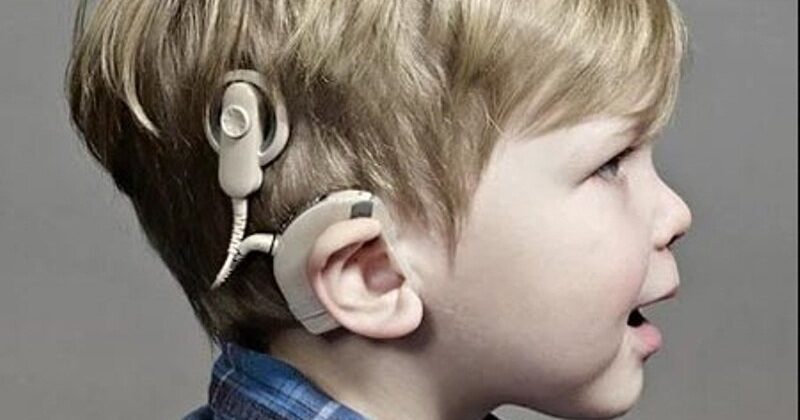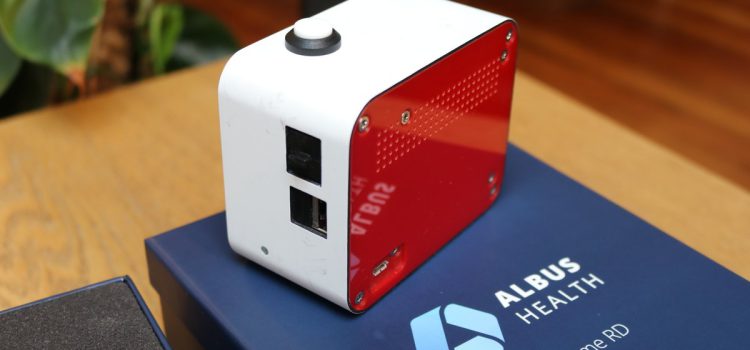اطلاع زودهنگام از نشانههای حمله قلبی یا تنفسی میتواند جان بسیاری را نجات دهد. این دستگاه که شبیه ساعت رومیزی طراحیشده است، کنار تخت بیمار قرار میگیرد. یک پردازشگر دادههای محیطی که هوش مصنوعی بیسیم آن را کنترل میکند، قرار است نقش پزشک شبانهروزی را برای برخی بیماران بازی کند.
این دستگاه که در دانشگاه آکسفورد ساخته شده در اولین گام برای افراد مبتلا به بیماریهای مزمن ریوی و تنفسی، از جمله آسم به کار گرفته خواهد شد. سازندگان این دستگاه امیدوارند طی چند سال آینده این پزشک الکترونیک را برای نظارت بر سایر بیماریها مانند نارسایی قلبی یا زوال عقل نیز آماده کنند.
درصورتیکه برنامه ساخت و آزمایش این دستگاه مطابق برنامه پیش رود، ظرف یک دهه، میتوان آن را برای کمک به میلیونها بیمار مبتلا به آلزایمر، صرع و پارکینسون نیز به کار گرفت.
این دستگاه که شبیه ساعت رومیزی طراحیشده است، کنار تخت بیمار قرار میگیرد و با حسگرها و یک میکروفون با اندازهگیری تنفس و ضربان قلب و تجزیهوتحلیل سرفه، خسخس و سایر صداها وضعیت بیمار را بررسی میکند. همچنین عوامل محیطی مانند آلودگی هوا و رطوبت را نیز تخت نظر خواهد داشت.
امروزه حدود ۳۳۴ میلیون نفر در سراسر جهان از آسم رنج میبرند. پیشبینی میشود که این رقم تا سال ۲۰۲۵ به ۴۰۰ میلیون نفر افزایش یابد. آسم میتواند تهدیدکننده زندگی و حتی کشنده باشد. تنها در بریتانیا، سالانه ۱۴۰۰ نفر بر اثر آسم جان خود را از دست میدهند.
اطلاع زودهنگام از نشانههای حمله میتواند جان بسیاری را نجات دهد. یافتن این علائم بر عهده پزشک الکترونیک است.
مایکش اودانی، مدیر اجرایی این پروژه در شرکت Albus Health که کار بر روی این دستگاه را بهعنوان محقق در دانشگاه آکسفورد آغاز کرد، گفت: «علائم شبانه ازنظر بالینی در طیف وسیعی از شرایط مختلف حیاتی هستند؛ اما زمانی که افراد در خواب هستند، از علائم خود آگاه نیستند، بنابراین این علائم اغلب نادیده گرفته میشوند – و این منجر به بسیاری از موارد اورژانسی میشود که میتوان از آنها پیشگیری کرد.»
این دستگاه در مراحل اولیه آزمایش است و تخمین زده شده است که برای عرضه آن به بازار حدود سه سال زمان نیاز است؛ اما نتایج بررسیهای اولیه امیدبخش است. مطالعهای که دپارتمان پزشکی نافیلد دانشگاه آکسفورد انجام داد، نشان داد که این دستگاه «ضربان تنفسی شبانه را با دقت بالا در محیطهای خانگی در دنیای واقعی اندازهگیری میکند».
اطلاعات تکمیلی و جزئیات فنی نظارت دستگاه:
Pediatric Nocturnal Respiratory Rate Monitoring Using a Non-Contact and Passive Bedside Device:
Accuracy of the Albus Home Research Device (RD)
Dr C. Wheeler¹, Dr W. Do¹, Prof M. De Vos², Dr R. Russell³, Prof M. Bafadhel³
¹Albus Health (Registered BreatheOx Ltd), Oxford, UK. ²Institute of Biomedical Engineering, University of Oxford, UK. ³Respiratory Medicine Unit, Nuffield Department of Medicine, Oxford, UK.
Rationale
- Remote monitoring is increasingly important. Existing
monitoring can be difficult in children due to
subjectivity, adherence or technique.
- Respiratory rate (RR) is important and objective. Yet,
there are no reliable long-term monitors of RR.
- Albus Home RD is a novel contactless monitor of RR,
cough and air-quality metrics.
- Aim: assess accuracy of Albus Home RD (Fig. 1),
compared to gold-standard wearable PSG
(SOMNOtouch™ RESPIRATORY, Somnomedics; Fig. 2).
- Healthy children were monitored
overnight in their normal home
bedroom environment.
- Two devices monitored RR: Albus
Home RD (Fig. 1) and a wearable
polysomnography (PSG) kit (Fig. 2).
- Both device RR readings were recorded
in 30-second segments (as
breaths/min) and time-synchronized.
- Albus Home RD generated continuous,
automated RR readings using
proprietary signal processing
algorithms.
- 9 healthy children (3F:6M) underwent
nocturnal RR monitoring. Ages ranged 6-
16yo; BMI 13.3-20.0.
- 1220 RR segments (610 minutes) were
compared to gold-standard.
- Overall accuracy was 93% (mean absolute
percentage error=0.05 (SD=0.06)).
- Median participant accuracy was 93.3%
(IQR=3.1%)
Figure 4: The plug-and-play Albus Home
RD wirelessly captures automated RR,
cough and air-quality metrics.
–
© BreatheOx Limited (t/a Albus Health), Oxford, United Kingdom 2021. Disclosure: This research was funded by Albus Health. The presenting author is employed by Albus Health.
- Albus Home RD measured nocturnal RR with high accuracy in realworld home environments.
- Non-contact design with wireless sensors facilitates long-term
adherence for remote monitoring. This automated system could
enable scalable monitoring in clinical care and research.
- Accurate remote monitoring has exciting potential to reduce burden
of daily monitoring for patients and carers.
Figure 1: Example use-case and placement of Albus Home RD
Methods
Results
Figure 2: The current goldstandard, wearable PSG
(SOMNOtouch™ RESPIRATORY,
Somnomedics).
- Gold-standard PSG RR data
were recorded by clinician
manual-count of raw
respiratory traces from
thoracoabdominal respiratory
effort belts.
- 10-minute periods per hour
per night were chosen for
device comparison, where data
were free from confounding
artefacts.
- Accurate RRs are within +/-10%
or +/-2 breaths/min of the PSG
RR.
Figure 3: Bland-Altman plot demonstrates agreement of Albus Home RD RR with gold-standard for participant
with mid-range accuracy (93.3%); average difference=-0.5bpm.











آخرین دیدگاهها